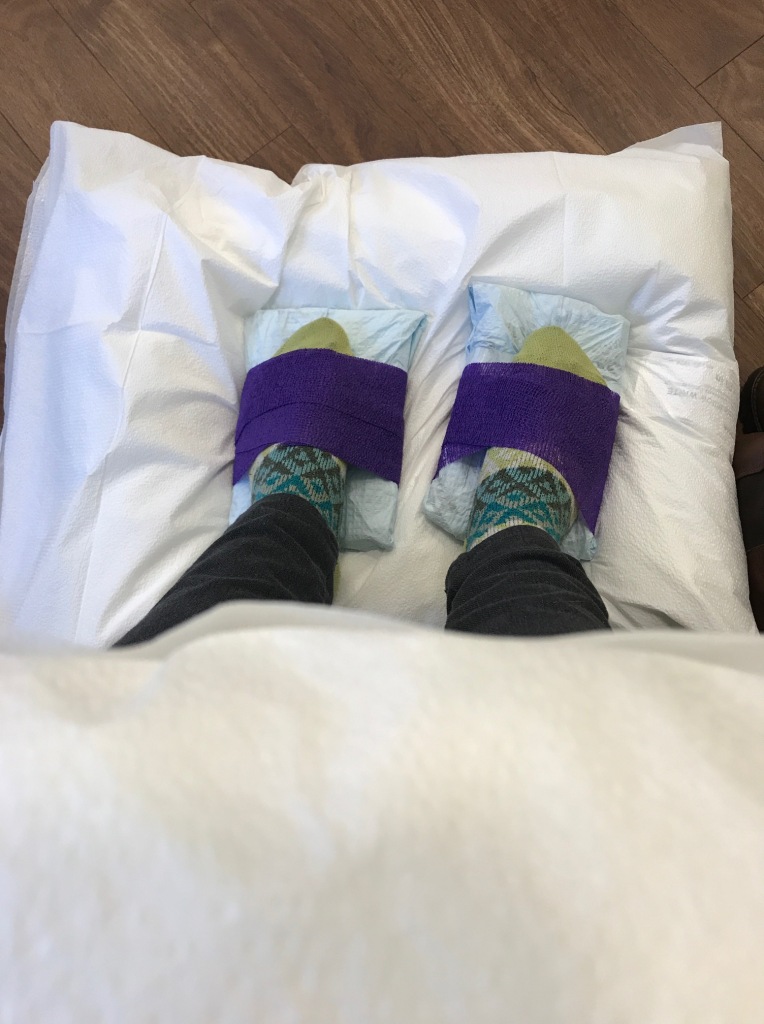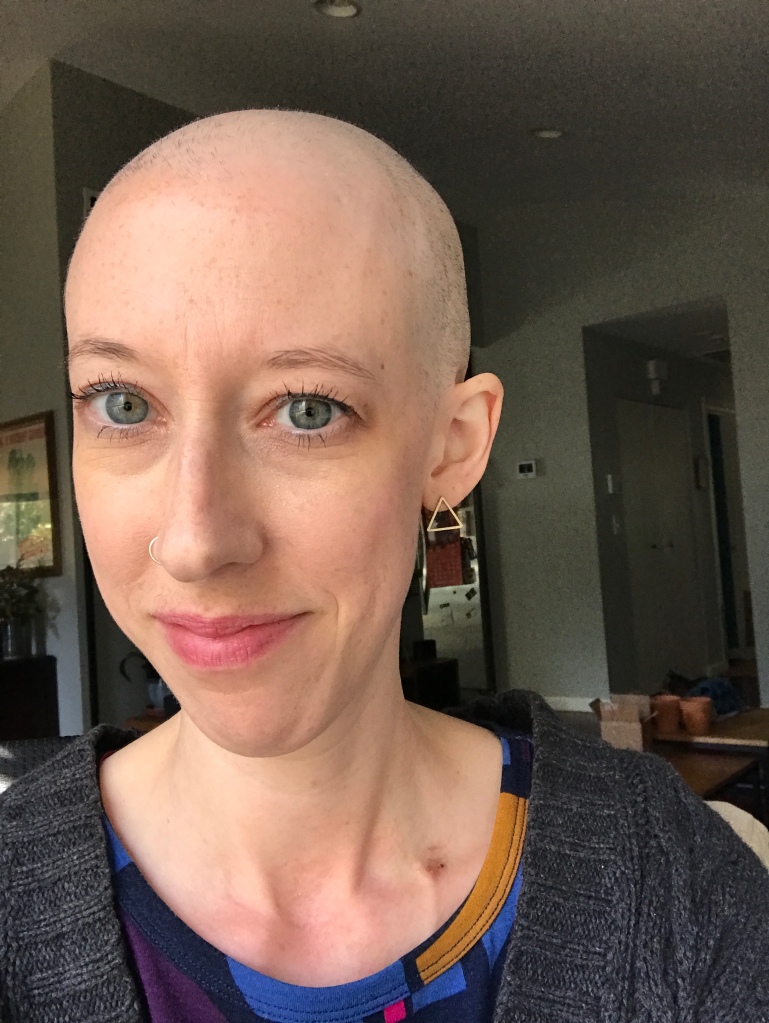If there’s anything worse than being in the Cancer Club, it’s being in the Cancer-During-a-Pandemic Club.
Sometimes I try to imagine what my experience would be like if I hadn’t been diagnosed in the middle of a pandemic, but it’s almost impossible. I know that my friends and family—and even colleagues, because I would’ve been going into the office!—would’ve been woven into my life in so many ways. They’d be stopping by for quick visits, or dropping off gifts and saying hello, or traveling down to come with me to chemo. I would’ve seen their faces and hugged their warm, vital bodies. I would’ve gone home for Christmas, rather than celebrating via Zoom.
Instead, it’s just been Steven and me. My mom came for a week and a half in January, after my lumpectomy/sentinel node biopsy and strict quarantining on her part. I saw Steven’s mom and stepdad once (very briefly, no touching) after they’d been vaccinated and came to drop something off. Our neighbors Sara and Ron have dropped off meals, and we went to look at their new kitchen, and we sat outside with them in the sun for a mini cherry blossom festival with snacks and many small dogs. But that’s it. That’s it.
Sometimes I see photos of other people’s cancer treatments in the Before Times and I want to scream. They’re all dolled up at the infusion center, their beautiful mouths mask-free and visible, with a loved one by their side keeping them company during chemo. Sometimes I read about patients who brought friends—plural!—with them to appointments to keep track of everything. I don’t begrudge anyone that experience, obviously, but it’s just such a stark freaking difference to my experience.
I’ve never seen most of my treatment team members without masks, and many of them have never seen me without a mask. They’ve never seen me smile, or otherwise. I’ve never seen them smile. How does that affect our interactions and our relationships, I wonder? I’m always conscious of the tone of my voice and the smile (or not) in my eyes, but it has to make a difference.
I have been to every in-person appointment—save one—alone. I drove myself to all my pre-diagnosis scans. I sat alone in secluded waiting rooms, shivering under thin cloth gowns, and had only myself for comfort when I got the news that my lump looked a little funky and needed a biopsy. I took myself to my biopsy and cried during the post-procedure mammogram, as the possibility that this was something serious started to settle into my bones.
Post-diagnosis, Steven was allowed into a single appointment: The big one, when we first met with my breast surgeon and got all the juicy details on my cancer (suspected staging, hormone receptivity, etc.). The front desk staffer at the cancer center wouldn’t even let him in at first, not until the receptionist in my surgeon’s office made a call and went down herself to escort Steven up.

I’ve had a couple of televisits, which Steven has been able to “attend” alongside me from the comfort of our living room. But otherwise, it’s just me. He has now dropped me off at the hospital for five surgeries, then gone home to while away the day and wait for the call to pick me up. He bakes bread or cleans the house or just works, distracting himself. Meanwhile I sit in the outpatient surgery waiting room alone, wondering when a nurse will come out, call my name, and take me back to pre-op. There is no familiar face beside me to squeeze my hand and whisper a final “good luck!” before everything begins. It’s just me.

Throughout chemo—which, hallelujah, I have finished as of this past Tuesday!—Steven dropped me off and waited for a text requesting pickup. I sat in the big recliner, hooked up to the IV pole, alone. It was just me and the infusion nurses and the other patients. As I sat, I wondered how different it would feel to have someone beside me, ready to unscrew the cap of my water bottle or adjust the volume on my audiobook so I didn’t have to remove my hands from the ice packs protecting me from developing peripheral neuropathy.
It’s not all bad. I am an independent person, and I like being alone with my thoughts. So I don’t truly mind the solitude, sometimes. But like so many other situations in life, I bristle at not having a choice. That’s what’s hard.
There is good, though. There are the creative and kind ways the folks in my circle have stepped up and been present without being present. There are the gifts and the cards and the gift cards (ha), the homemade Mad Libs created to amuse me, the thoughtful books sent to distract me, the snacks supplied to nourish me. Care and compassion distilled into tangible items, squeezed into envelopes, and sent through the mail.




All of them have meant so much. Steven slipped packets of letters into my chemo bag for my last three infusions and it was such a genuine joy to read handwritten notes from so many people while I sat in that chair. I still have five letters left to read, ones that arrived just after my final infusion. I’m saving (and savoring) them for the weeks ahead. And I’m also feeling hopeful that finally, now that chemo is behind me and we’re all getting vaccinated, I will be able to see all my wonderful humans again. Cards are lovely, but people are even better.


